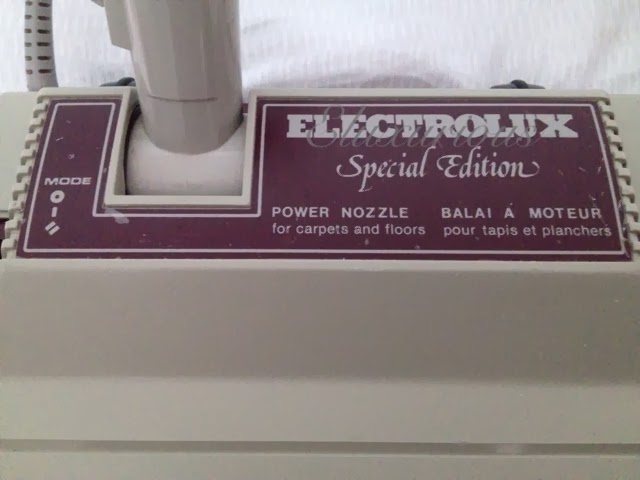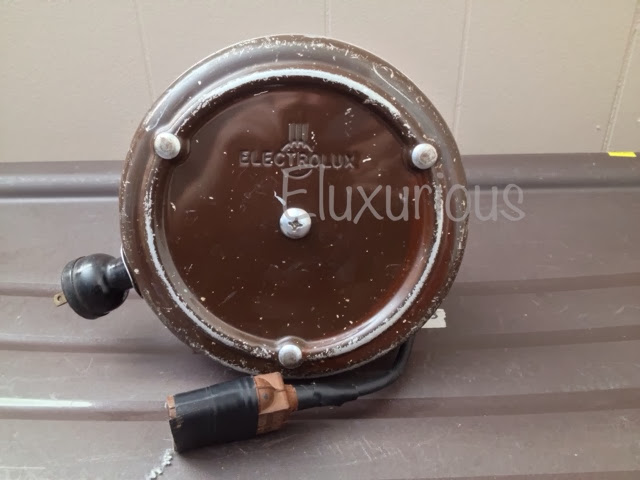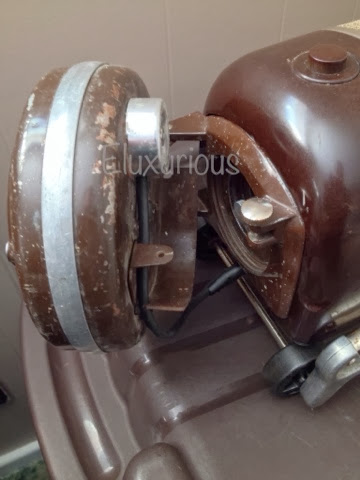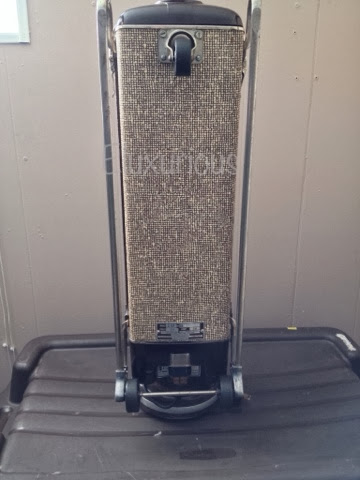The full ensemble, featuring the original hose*, power nozzle**, plastic accessory wands, combination tool, baby crevice tool, floor brush, and Sidekick. If memory serves, everything except the Sidekick came with this purchase, and I'm assuming, as this is a top-of-the-line model, that the Sidekick would have been (optionally) available with the brand new ensemble.
Other than its good looks, what makes the SE special? If I recall correctly, Electrolux sold the SE outside of the normal door-to-door or showroom network. In fact, I can remember seeing display kiosks in shopping malls featuring the SE, LE, SE upright, and SE shampooer-polisher, somewhere in the late '80's. Why Electrolux did this, I don't know...perhaps they wanted to increase their exposure, and thus sales, by changing their sales methods***. Did it work? Who knows?
Close ups of the information panel and power nozzle, with logos:
Don't quote me on this, but I believe the baby crevice tool, bumper-less floor brush, and plastic wands were standard with this model. I'm not sure if this was standard across the board on all of the special and/or economy models. As a comparison, when my folks got their brand new in-the-box Diplomat in 1990, it came with a full-sized crevice tool, floor brush with bumper, and a set of old school steel accessory wands, so perhaps there was a bit of mixing and matching going on over the years. I also note that my friend's 2009(?) or 2010(?) Aerus Lux Classic has these same 'cheaper' attachments.
All that surmised about, the 2100 Special Edition is a fine vacuum, and I do put it to work on occasion. In fact, after this post, I made it the upstairs vacuum for the week.
*Of course, I NEVER use any of the piece of shit Electrolux braided hoses. The ONLY good thing about any of them is the attractive weave patterns on them. I may be vehement about it, but those braided hoses are the only things I absolutely detest about Electrolux.
**The PN5, PN6, and PN6a (which this one is) are unique among Electrolux power nozzles for having the "Omni-flo Automatic" (whatever that means...automatic height adjustment, I guess) logo as well as the notation "for carpets and floors". To my knowledge, Electrolux had never before included the functions of the vacuum or accessory on the vacuum or accessory itself, except for something like 'Automatic' or 'Elux-o-Matic', and I don't think they have done so since. Perhaps, since the L-shaped nozzle was a new design, the company wanted to emphasize its dual function. Who knows?
***I believe the Regency Series was also sold outside of the normal channels. Is this true of the Advantage Series as well? I'm confuzzled now.









